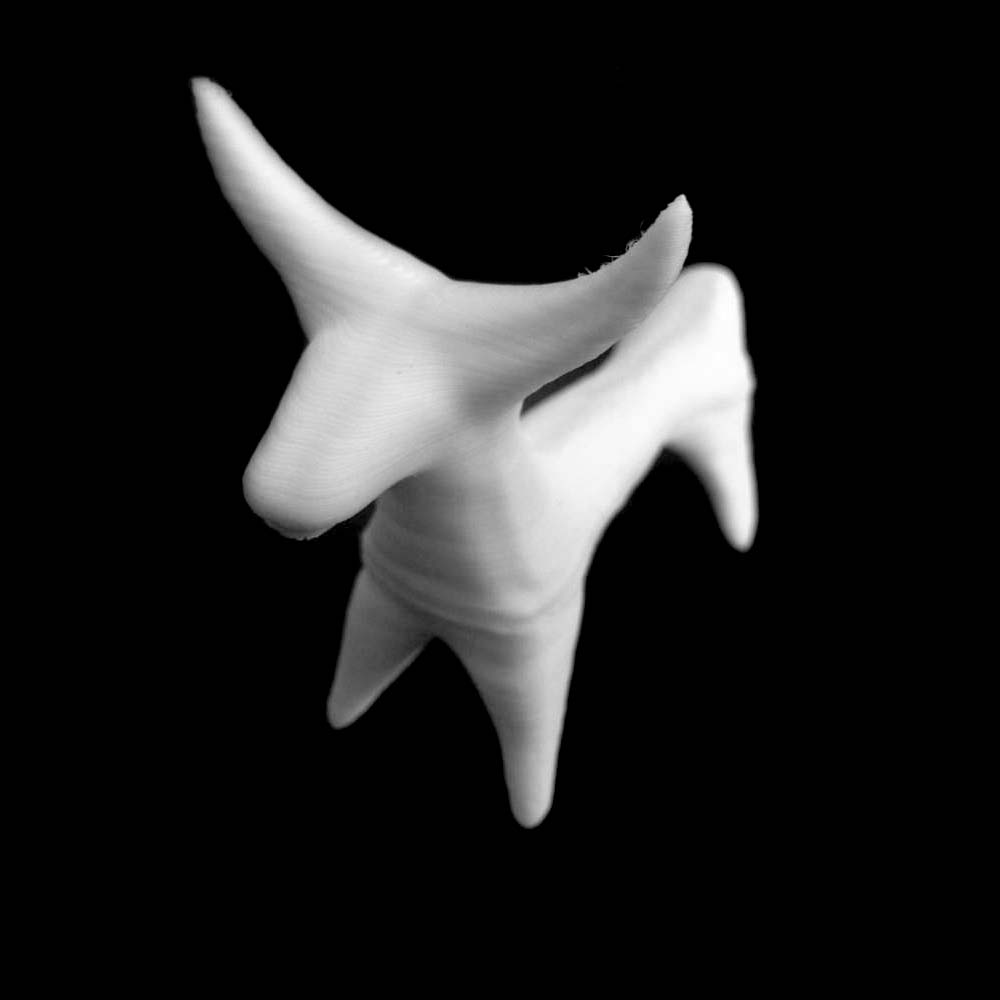
Mycenaean Figure of Bull at The British Museum, London
myminifactory
This terracotta figure boasts a long cylindrical body supported by tapering legs, a head with a flattened muzzle and large inward-curving horns that are adorned with painted decoration. Crafted approximately 1300 BC, it embodies the unique characteristics of Helladic society and culture. Helladic roots date back to the Neolithic period in Greece, marked by numerous innovations developed during the second and third phases of the Early Helladic period (2650-2050/2000 BC), including bronze metallurgy, monumental architecture, and fortifications, as well as a hierarchical social structure and extensive interactions with other Aegean regions. These advancements would continue to evolve throughout the Middle Helladic period (2000/1900-1550 BC), characterized by the spread of Minyan ware, and the Late Helladic period (1550-1050 BC), during which Mycenaean Greece flourished. Helladic is a modern archaeological term designed to identify a sequence of periods that define the culture of mainland ancient Greece during the Bronze Age. This term is commonly used in archaeology and art history to categorize the culture's development over time. It was created to complement two parallel terms, "Cycladic," which refers to the same sequence in reference to the Aegean Bronze Age, and "Minoan," which refers to the civilization of Crete. The Helladic scheme primarily applies to pottery and is a relative dating system. Pottery found at any given site can be ordered into "Early," "Middle," and "Late" based on style and technique. The total time window for the site is then divided proportionately into these periods. Interestingly, there is a correlation between "Early" across all Greece, etc. In addition, some "absolute dates" or dates obtained through non-comparative methods can be used to date the periods and are preferable when available. However, the relative structure was established before the age of carbon-dating (most excavations were conducted during this time as well). Typically, only relative dates are obtainable and form a framework for characterizing Greek prehistory. Objects are generally dated by the pottery found in associative contexts. Other objects can be arranged into early, middle, and late categories as well, but pottery serves as a primary marker. (Credit: British Museum, Wikipedia) This object is part of "Scan The World." Scan the World is a non-profit initiative introduced by MyMiniFactory, aiming to create a digital archive of fully 3D printable sculptures, artworks, and landmarks from around the world for public access at no cost. Scan the World is an open-source community effort; if you have interesting items nearby and would like to contribute, email stw@myminifactory.com to learn how you can help. Scanned: Photogrammetry (Processed using Agisoft PhotoScan)
With this file you will be able to print Mycenaean Figure of Bull at The British Museum, London with your 3D printer. Click on the button and save the file on your computer to work, edit or customize your design. You can also find more 3D designs for printers on Mycenaean Figure of Bull at The British Museum, London.
